
About Andrew Cusack
 Writer, web designer, etc.; born in New York; educated in Argentina, Scotland, and South Africa; now based in London.
Writer, web designer, etc.; born in New York; educated in Argentina, Scotland, and South Africa; now based in London. read more
News
Blogs
Reviews & Periodicals
Arts & Design
World
France
Mitteleuropa
Knickerbockers
Argentina
The Levant
Africa
Cape of Good Hope
Netherlands
Scandinavia
Québec
India
Muscovy
Germany
Academica
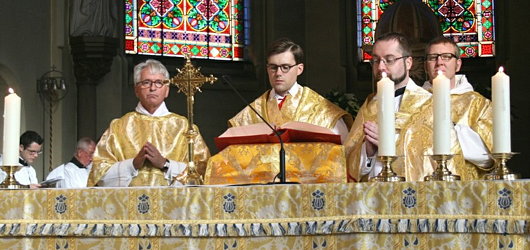
Some Norwegian Catholics
Writers, politicians, journalists, academics — Norway’s Catholics seem an intellectual bunch. The Church in Scandinavia is on a slow but steady ascendant, and it’s telling (of both the rise and fall of many) that there are now more seminarians studying for the priesthood for the Nordic countries than there are for all of Ireland.
As a Norwegian acquaintance of ours was ordained for the Diocese of Oslo within the past year, I thought a little jaunt through a handful or two of Norwegian Catholics might be interesting. There are some I would have liked to included — the conversion of the former Lutheran ecumenist Ola Tjørhom provoked controversy and Wilhelm Wedel-Jarlsberg preceded Christopher de Paus as a papal chamberlain — but there is only so much time and space and effort.
Of those mentioned here below, only Sigrid Undset has achieved worldwide fame. Her work Kristin Lavransdatter is an absolute must for any serious reader of literature and was recently re-translated into English by Penguin.
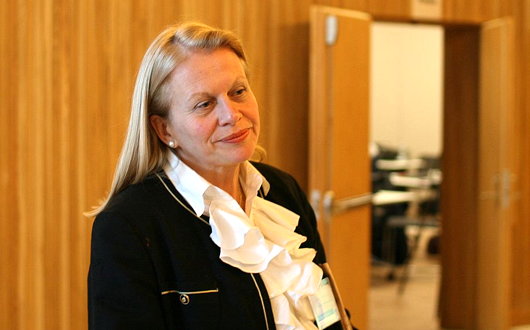
1957—
Matláry was originally a member of the Christian Democrats (KrF) but defected to Høyre when the KrF refused to rule out a coalition with the Labour party.
In addition to being a Dame of the Order of Malta, she serves on the Pontifical Council for Justice & Peace, is a member of the Pontifical Academy of Social Sciences, and a consultor to the Pontifical Council for the Family. Her Magyar surname comes from her Hungarian husband. Her 2004 spiritual autobiography included a preface by Cardinal Ratzinger (later Pope Benedict XVI, of course).
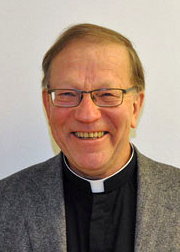
1945—
He converted to Catholicism in 1998 and was ordained a priest of the Diocese of Oslo in 2010. In addition to his parish duties, Fr Kværne is Catholic chaplain to Oslo’s hospitals.
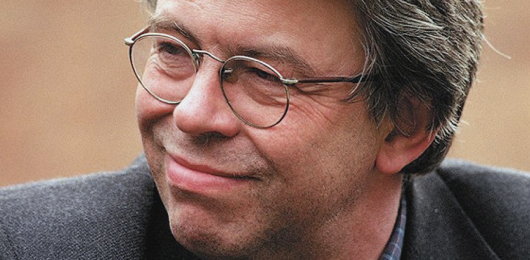
1942—
Dr Oftestad specialises in historiography, the Reformation, and modern church history. He was received into the Church in 2000, and continues as a Professor Emeritus.
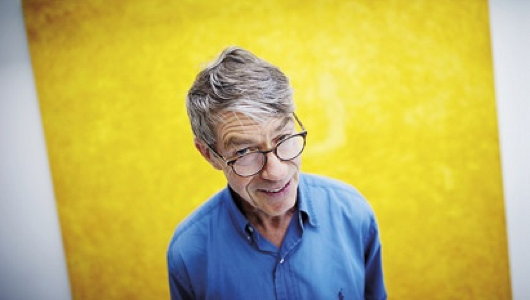
1939—
Originally a Marxist and elected head of the Norwegian Students Society as a socialist, he converted to Catholicism in the 2000s.

1936—
From 1969 until 1989 he served as a Member of Parliament for Oslo. He was made the first Minister of Culture and Science in 1981. The portfolio had previously been Culture, Education, and Church Affairs, but the ecclesial affairs of the state church were given to another minister owing to Langslet’s Catholicism. As Minister, he abolished the NRK monopoly on broadcasting in Norway by allowing local radio stations.
The author of many books, he served as President of the Norwegian Academy for Language and Literature from 1995 to 2011. The Danish Academy awarded him the Karen Blixen Prize (for foreign writers), which has only been awarded five times since instituted in 1984.
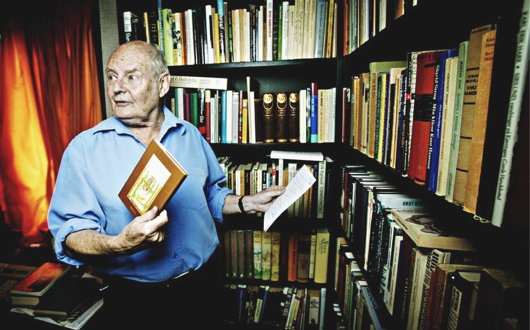
1922—2010
Bang worked at the newspaper Jarlsberg from 1945 but was taken on by Dagens Næringsliv in 1946, remaining there until 2006. He was most famous for the unsigned column På nattbordet (“On the bedside table”) which looked into what individuals were reading. In addition to several works of fiction and non-fiction, he was DN’s London correspondent from 1956 til 1974.
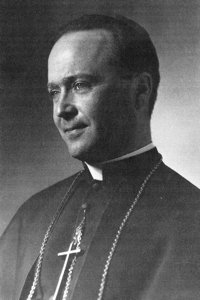
1920—2008
Joining the Norwegian military, he served in London during the war and then Akershus Castle until his discharge in 1946, when he worked as an assistant director on the film Operation Swallow about the sabotage of the Vemork hydroelectric plant during the War.
In 1949 he became a Trappist at Caldey Island off Wales, taking the name of John. Ordained a priest in 1957, he served in the Roman office of the Trappists from 1960 to 1963, ordained as coadjutor-bishop of Oslo in 1963 and serving as Bishop of Oslo from 1964 until 1983. He was made a Commander of the Order of St Olav, and was the first Catholic bishop to be buried in Bergen since 1522.
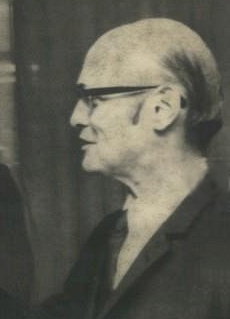
1916—1998
Working in the Resistance, he served as a police superintendent in Bergen and worked in the National Insurance Administration before being forced to flee to Sweden in 1944, after which he continued with the London-based Norwegian High Command.
After the war Ofstad began his diplomatic career, serving Norway in London, Chicago, Turkey, the Netherlands, West Germany, as well as in the Ministry in Oslo. He was the King of Norway’s Ambassador to West Germany from 1973 to 1977, and to Austria from 1977 to 1984.
A Knight of Malta, he was also made a Commander of the Order of St Olav and was awarded the Badge of Honour of the Norwegian Red Cross.
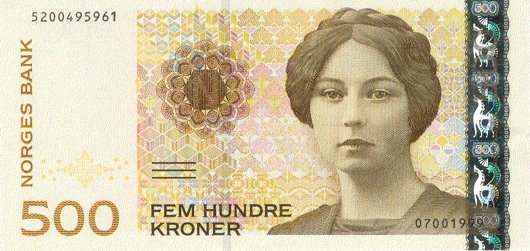
1882—1949
Undset is most famous as the author of Kristin Lavransdatter, the trilogy of historical novels following the life of a fourteenth-century Norwegian woman. The final book in the trilogy was printed in 1922.
She converted to Catholicism in 1924 and was awarded the Nobel Prize for Literature in 1928 “principally for her powerful descriptions of Nordic life during the Middle Ages.” She is the only Catholic to have been depicted on a Norwegian banknote.
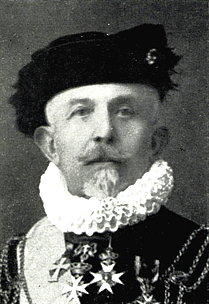
1862—1943
Having converted to Catholicism, Paus was made a Privy Chamberlain of the Sword and Cape by Benedict XV and served Pius XI and Pius XII in the same capacity. Pius XI made him a count in 1923 and he divided his time between Rome and his numerous properties around Scandinavia.
He donated his collection of Greek and Roman art — the largest in the Nordic countries — to the National Gallery of Norway in 1918. A Knight of Malta and of the Constantinian Order, he received numerous honours from the Papacy and from Scandinavian monarchs.
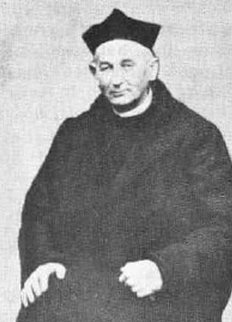
1835—1907
In his 41st year he was ordained a priest for the Clerics Regular of St Paul (the Barnabite order) and became renowned for his sanctity. Following his death in 1907 pilgrims began flocking to his grave, and in 1936 his remains were moved into the Barnabite church of Mouscron.
Search
Instagram: @andcusack
Click here for my Instagram photos.Most Recent Posts
- Amsterdam November 26, 2024
- Silver Jubilee November 21, 2024
- Articles of Note: 11 November 2024 November 11, 2024
- Why do you read? November 5, 2024
- India November 4, 2024
Most Recent Comments
Book Wishlist
Monthly Archives
Categories



Ah, my dear old friend, Fr Ole Martin Stamnestro.
What is remarkable is how many of these are converts. There has been a popular fable for many decades that “Until recently, Norway had no Catholics.” Sure, unless you count the 99.99% of Norwegians who lived there till the 16th century. But more pertinently, a goodly percentage actually survived the ‘Reformation’ and remained in place until the 19th century, when many or most came to America. The reason you don’t hear more about them is that Norway had a very small population so even a hefty chunk of them might be only a few thousand, easily swamped in the population tides from other origins.
My great-uncle’s father was a Catholic from Norway. He settled in Florida in the late 1800s (he was in shipping, naturally). In some parts of this country (notably the northern Midwest and formerly Bay Ridge, Brooklyn) Norwegian-descent Catholics are not at all thin on the ground.
As a Lutheran born and bred, I naturally believe one must follow one’s conscience in matters of the spirit, as Luther himself insisted. These aforementioned folks obviously have (had) temperamental needs which the Roman discipline fulfills (fulfilled). However, most Norwegians appreciate the Christian freedom that has always been the mark of the Lutheran Church to which, even now in 2013, the monarch must belong as must at least half of the parliament. In Xto per pedes Apostolorum, James Townsend, Lutheran minister, retired
“Christian freedom” to do what, precisely? Not to be a non-Lutheran, it seems.
Thankyou for posting these biographies of such interesting people, and, yes, mostly converts. This conversion rate gives one hope for the northern countries, as well as the rest of Europe, which seemed so de Christianized.
How is it possible in the same breath to speak of “Christian freedom that has always been the mark of the Lutheran Church” and “the Lutheran Church to which, even now in 2013, the monarch must belong as must at least half of the parliament”? If there is freedom then why must there be a “must”?
Thanks for an interesting post. Having enjoyed Kristin Lavransdatter as a very Catholic work, I found it interesting to learn that she converted after completing it.
Very interesting list.
I have to wonder if Norway, Sweden and perhaps even Iceland aren’t hidden yet fertile ground for the Catholic re-evangelization of Europe. For serious Christians in the region, the slow decline of Protestantism and the impact of materialization must be very fresh in mind. For those who explore their faith, the official state religion of Lutheranism leads directly back to Catholicism, as Lutheranism fades in increasingly away.
It does seem rather odd to combine “Christian freedom” (in the sense of “following one’s conscience in matters of the spirit”) and political obligations to religion in one sentence. Perhaps “Rev. Townsend” is a satirist only pretending to be a retired Lutheran minister.
My mother read Kristinlavandatter in the 1930’s. I am 86 and have her copy. I bought the recent version in three volumes and am reading it now. Very powerful and most relevant in our century as well as the Fourteenth Ceentury. Undset was a most insightful writer.
Astrid Ritchie O’Brien, recently deceased professor of philosophy at Fordham Jesuit University in New York is/was a Roman Catholic of Norwegian heritage albeit an American citizen.
Roman Catholisism are extremely rare here in Norway.
As this site states it is close to none-existing in the ethnic Norwegian population. The exception is a very marginal highly academic elite that, believe me, has no influence outside their limited small circles.
Those romanists who dream of more influence in the ethnic Norwegian society will be disappointed. There is no fertile ground for the Roman religion in this small country.
However, your hope lies with the increasing number of immigrants from other “Catholic parts” of the world. I believe many of these peoples will lose their beliefs in Catholisism if they continue to live in this part of the world over a longer period of time.
Roman catholisism is simply out of time in a modern, well functioning
society. Besides, the scandals of this “church” does not help its popularity. Sex scandals and money frauds helps destroying that religion from within !